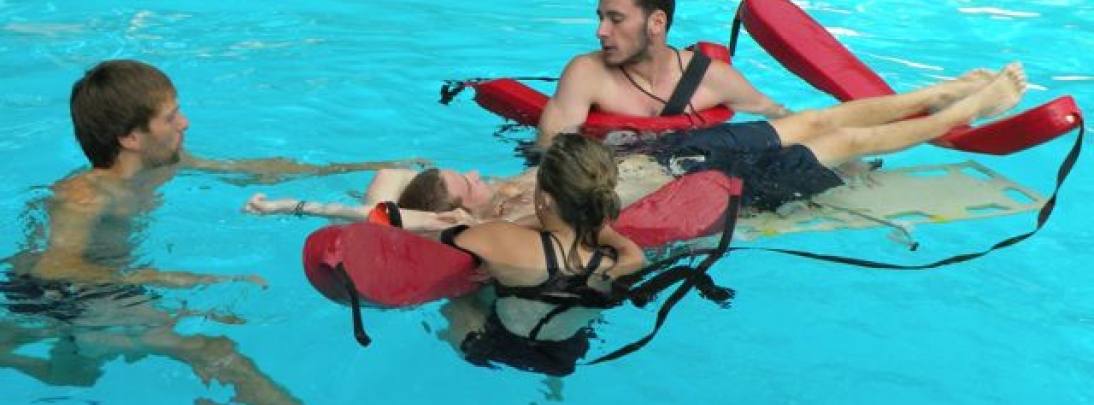
Lifeguarding is a critical responsibility that requires a combination of physical skills, mental acuity, and thorough training. Lifeguard classes are designed to equip individuals with the knowledge and abilities needed to prevent and respond to aquatic emergencies effectively. This comprehensive curriculum ensures that lifeguards are prepared to stay safe while saving lives.
Introduction to Lifeguard Training
Lifeguard training programs provide the foundational skills necessary for aspiring lifeguards. These courses typically cover a range of topics, including water safety, rescue techniques, first aid, and CPR. The primary goal of these programs is to prepare participants to handle various emergencies that may arise in aquatic environments such as pools, lakes, and oceans.
Prerequisites for Enrollment
Before enrolling in a lifeguard training program, candidates must meet certain prerequisites. These requirements often include:
- Age Requirement: Most lifeguard certification programs require candidates to be at least 15 years old.
- Swimming Proficiency: Candidates must demonstrate strong swimming skills. This usually involves swimming a certain distance (typically 300 yards) continuously and retrieving a submerged object from a specified depth.
- Physical Fitness: Lifeguarding is physically demanding, so candidates must be in good health and physical condition.
Core Components of Lifeguard Training
Lifeguard classes are structured to provide a balanced mix of theoretical knowledge and practical skills. The comprehensive curriculum generally includes the following core components:
Water Rescue Skills
Water rescue skills form the backbone of lifeguard training. These skills enable lifeguards to respond quickly and effectively to drowning incidents and other water-related emergencies. Key areas of focus include:
- Swimming Rescues: Lifeguards learn various swimming strokes and techniques to approach and rescue distressed swimmers.
- Rescue Equipment: Training covers the use of rescue tubes, buoys, and other equipment to aid in water rescues.
- Spinal Injury Management: Lifeguards are trained to handle potential spinal injuries with techniques like the head splint and head chin support.
CPR and First Aid
Cardiopulmonary resuscitation (CPR) and first aid are crucial components of lifeguard training. Lifeguards must be prepared to provide immediate care to individuals in distress. The training includes:
- Adult, Child, and Infant CPR: Lifeguards learn the differences in performing CPR on adults, children, and infants.
- Automated External Defibrillator (AED): Training includes the proper use of AEDs, which are essential in cases of sudden cardiac arrest.
- First Aid Procedures: Lifeguards are taught to manage a variety of injuries and medical conditions, from cuts and fractures to heat-related illnesses and allergic reactions.
Surveillance and Prevention
Preventing emergencies is just as important as responding to them. Lifeguards are trained in surveillance and prevention techniques to identify potential hazards and prevent accidents. This includes:
- Scanning Techniques: Lifeguards learn effective scanning methods to continuously monitor swimmers and detect signs of distress.
- Risk Management: Training includes identifying and mitigating potential risks in and around the water.
- Public Interaction: Lifeguards must be able to communicate effectively with swimmers and enforce safety rules and regulations.
Teamwork and Communication
Effective communication and teamwork are essential in lifeguarding, especially during emergency situations. Training programs emphasize:
- Team Coordination: Lifeguards practice working together during rescues and emergency drills.
- Communication Skills: Clear and assertive communication is crucial, both with team members and the public.
- Emergency Action Plans: Lifeguards are trained to follow and implement established emergency action plans (EAPs).
Advanced Lifeguard Training
For those looking to advance their skills, many programs offer specialized and advanced training modules. These courses delve deeper into specific areas and prepare lifeguards for a wider range of scenarios.
Open Water Lifeguarding
Lifeguarding in open water environments such as beaches and lakes requires additional skills and knowledge. Advanced training in this area includes:
- Ocean and Surf Rescues: Techniques for handling rescues in the surf and open ocean.
- Weather and Water Conditions: Understanding and anticipating changes in weather and water conditions that could impact safety.
- Marine Life Hazards: Identifying and responding to hazards posed by marine life, such as jellyfish and sharks.
Aquatic Facility Management
For lifeguards interested in supervisory roles, training in aquatic facility management covers:
- Leadership Skills: Developing leadership abilities to manage and oversee other lifeguards.
- Operational Procedures: Understanding the operational aspects of running an aquatic facility, including maintenance and safety protocols.
- Emergency Preparedness: Planning and conducting drills and simulations to ensure preparedness for various emergency scenarios.
Certification and Recertification
Upon successful completion of lifeguard training, participants receive certification. This certification is typically valid for two years, after which lifeguards must undergo recertification to ensure their skills remain current and effective.
Recertification Process
Recertification involves:
- Refresher Courses: Lifeguards attend refresher courses to update their skills and knowledge.
- Skills Assessment: Demonstrating proficiency in core lifeguard skills, including CPR, first aid, and rescue techniques.
- Continuing Education: Staying informed about the latest developments and best practices in lifeguarding and water safety.
Conclusion
Lifeguard training is a comprehensive and rigorous process designed to prepare individuals for the critical role of safeguarding lives in aquatic environments. Through a well-rounded curriculum that includes water rescue skills, CPR and first aid, surveillance and prevention, and advanced training options, lifeguards are equipped to handle a wide range of emergencies. By staying current with certification and recertification, lifeguards ensure they are always ready to stay safe and save lives.


























